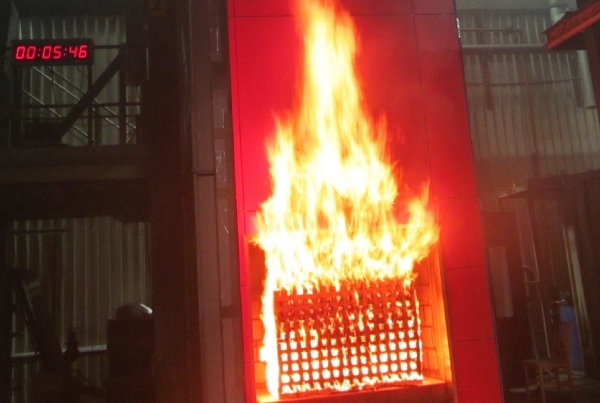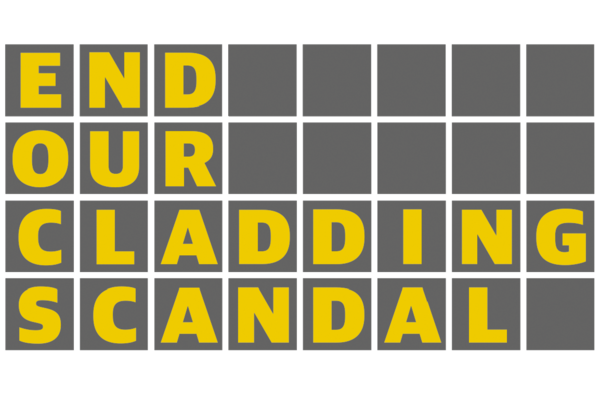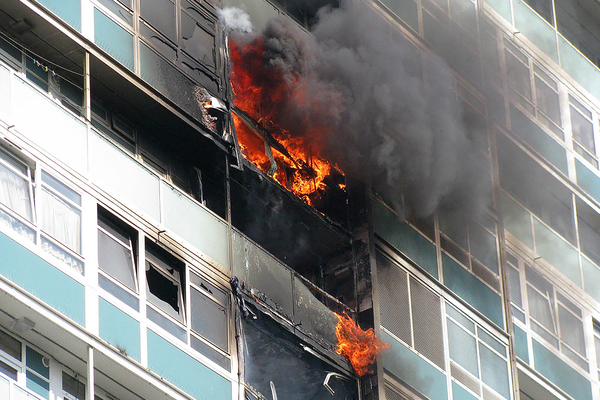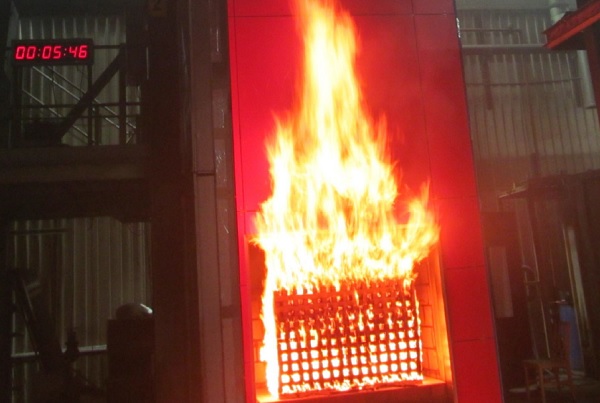The government is not doing enough to prevent another tragedy in a high-rise tower
If the government does not act now, there will inevitably be further preventable loss of life in UK residential tower blocks. It is simply a matter of time, write Sam Webb, Danielle Gregory and Frances Clarke
We welcome the government’s announcement to allocate £200m to the removal of aluminium composite material (ACM) cladding on private residential blocks.
However, we feel that this does not go nearly far enough.
ACM is just one of several cladding materials known to conduct the spread of flames. If the government is serious about avoiding another preventable tragedy like Grenfell, then it must immediately fund the removal of all forms of dangerous cladding.
Ten years ago the Lakanal House fire caused the deaths of six people, and highlighted the dangers of exterior surface spread of flame on multi-storey blocks.
The panels used at Lakanal House were ‘Trespa’ high-pressure laminate (HPL) and burned through in just four-and-a-half minutes.
Tower Blocks UK have learned that there is a programme in place to carry out tests on HPL panels in the next stage of investigations following on from the public inquiry into the Grenfell fire and the Hackitt Report.
Exhaustive tests have already been carried out into Trespa HPL panels.
In 2009, immediately after the Lakanal fire, the Metropolitan Police instructed the Building Research Establishment (BRE) to remove undamaged window sets from a number of flats in Lakanal House and to conduct a full-size fire test.
This test replicated the two affected flats – flat 65 on the ninth floor where the fire started in a TV in a bedroom two floors beneath flat 79 on the 11th floor, where Catherine Hickman lived – and the BRE was then instructed to carry out a full-scale fire test.
This established what had been observed on the day of the fire. It took four-and-a-half minutes for a panel to fail and burn through; and nine minutes for the fire to burn through one panel in Flat 65, travel up two floors, burn through another panel and enter Flat 79. This had fatal consequences for the six people in the adjacent flats.
Details of this evidence of the Met-BRE test will be found in the Lakanal House evidence presented at the inquest in January 2013.
“It took four-and-a-half minutes for a panel to fail and burn through; and nine minutes for the fire to burn through one panel in flat 65, travel up two floors, burn through another panel and enter flat 79”
It will be found in the evidence of the first incident commander/watch manager from Peckham Fire Station in their Met witness statement. It will be in further evidence, from other fire fighters who were there on the day, the fire investigation report by Dr Peter Mansi for the London Fire Brigade and the report by Dr Crowder from the BRE.
Once a fire breaks out of a flat to the outside façade, by whatever means, then the heat and flames will hug the façade in what is known as the Coandă effect.
The critical part of the external façade is the spandrel between the top of one window and the cill of the one above.
Flammable cladding is just one of several serious issues affecting tower blocks in the UK.
Investigations on large panel system (LPS) tower blocks (of the Ronan Point ‘house of cards’ design) have revealed that many fail to meet the building regulations for structural resistance to progressive collapse.
Additionally, many suffer from an inherent design flaw which allows for the internal spread of fire due to significant breaches in compartmentation. This is an issue that we brought to the attention of government, starting with the Ledbury Estate blocks in Southwark.
Since then further LPS blocks across the country have been found to be in the same unsafe condition.
A number of LPS blocks, Ledbury Estate is a notable example, which were formerly considered safe for piped mains gas by both the BRE in 1985 and the London Borough of Southwark and Arup in 2017 were found, after we pointed this out to them, to fail to meet not only the requirements of government Circular 62/68 but they failed to meet even the reduced standards of Circular 71/68.
What this means is that these blocks are not only structurally unsafe for a piped mains gas supply, they are not even safe to be occupied.
These are “dangerous structures” within the meaning of the building regulations.
The collapse of major buildings and structures is relatively rare. However, it does happen.
In June 1973 the roof of Camden School for Girls in north London failed catastrophically, a few hours after a parents’ evening.
During a storm on 14 August 2018, part of the Morandi Bridge in Genoa, carrying the main motorway link between Italy and France, failed. Forty-three people died and over 600 were made homeless. No one in authority listened to prior warnings about the bridge’s structure. People assumed that because it was standing it must’ve been safe.
Some local authorities have not undertaken tests on their LPS blocks as recommended by the Ministry of Housing, Communities and Local Government in 2017.
We’ve found evidence to suggest that some local authorities do not even realise that the blocks they own are of a LPS form of construction.
Many of these blocks have a piped mains gas supply despite government recommendation against the use of gas in LPS blocks since 1968.
More concerning still, we’ve found evidence that there are occupied LPS blocks with cladding installed over active gas pipes.
“No one deserves to live in fear. Yet there are residents of tower blocks in this country today who are facing serious risks. What has been proposed is not enough. The government must act, and act immediately”
If the government does not act now, there will inevitably be further preventable loss of life in UK residential tower blocks. It’s simply a matter of time.
That is why we are calling on the government to carry out an urgent and thorough independent national inspection of all UK tower blocks. To date there has not been a sufficient national response from government to both the cladding and the LPS issues.
All blocks should undergo rigorous fire safety and structural robustness tests, particularly those of large panel form of construction.
The retrofitting of sprinkler systems must be adopted, in line with the expert advice that government have repeatedly received from fire safety professionals.
The Grenfell fire showed that many residents who had physical disabilities, mental health issues, or were partially sighted or blind were living on the upper floors. They could not get out of the building in time. They died.
No one deserves to live in fear. Yet there are residents of tower blocks in this country today who are facing serious risks. What has been proposed is not enough. The government must act and act immediately.
Sam Webb (pictured), Frances Clarke and Danielle Gregory, research group members, Tower Blocks UK













